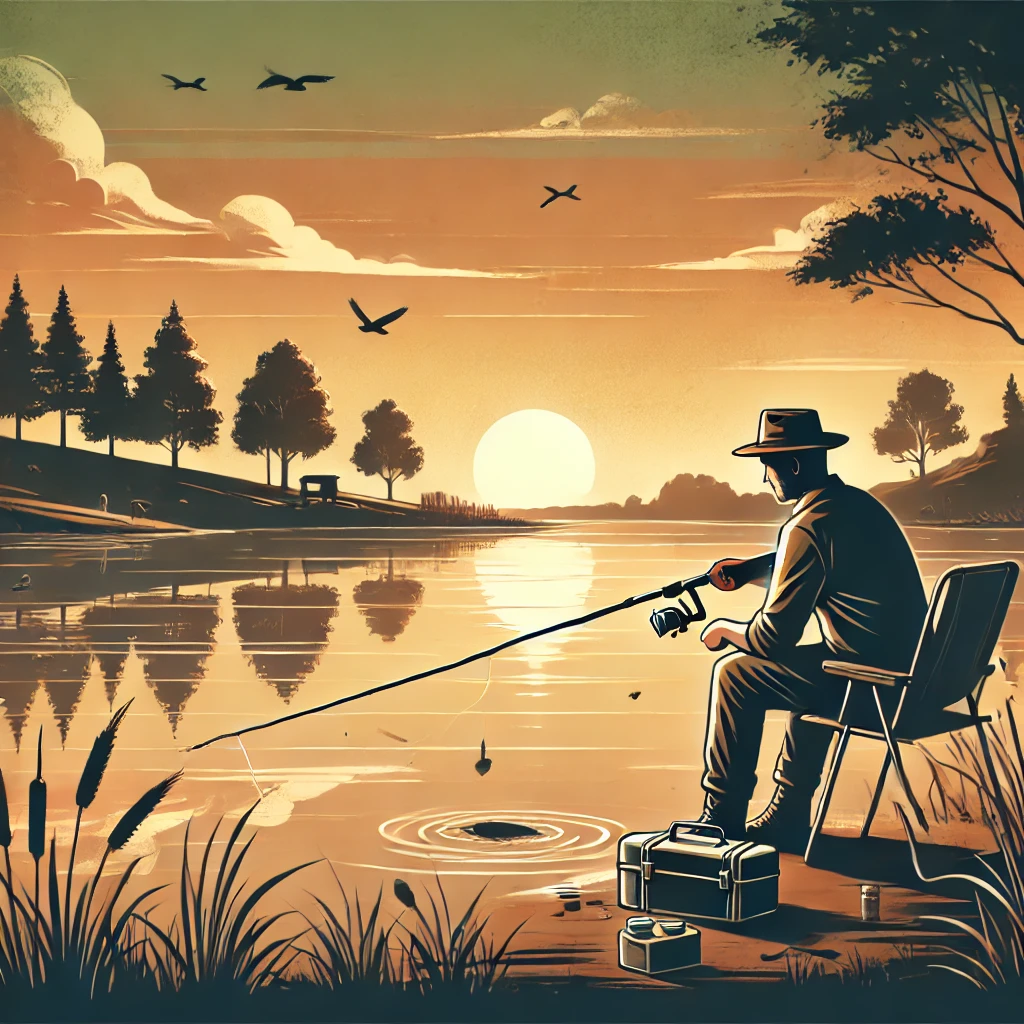If you’ve ever strolled along a peaceful lake or riverbank and spotted an angler patiently waiting for a bite, you might have wondered: What is it about fishing that captivates so many people? Fishing is more than just a hobby—it’s a chance to connect with nature, challenge yourself, and experience moments of tranquility that are hard to find elsewhere. But if you’re completely new to the world of fishing, getting started can feel a bit overwhelming. Which gear do you need? Where should you go? How do you even know if the fish are biting? In this guide, we’ll walk through everything you need to begin your fishing journey, from choosing the right equipment to finding the perfect fishing spot. By the end, you’ll have the confidence to cast your line and discover the joys of this timeless pastime for yourself.
Understanding the Appeal of Fishing
Before diving into the practical details, it’s helpful to understand why fishing has endured for centuries as a beloved activity. At its core, fishing offers a unique blend of relaxation and excitement. There’s something inherently peaceful about being near water, surrounded by the gentle sounds of nature. Yet, there’s also the thrill that comes with the slightest tug on the line, hinting that a fish may be interested in your bait.
For many people, fishing is a way to unplug from the digital world. Phones, emails, and social media can all be set aside for a few hours of quality time in the great outdoors. It’s an opportunity to slow down, observe wildlife, and appreciate the beauty of a sunrise over the water. Fishing also fosters patience and perseverance—two qualities that can benefit you both on and off the water. And, of course, there’s the satisfaction of finally landing a fish after a long wait!
Basic Fishing Gear: What Do You Really Need?
When you first step into a tackle shop or browse an online fishing store, the sheer number of rods, reels, lures, and gadgets can be overwhelming. Fortunately, you don’t need a mountain of gear to get started. Here’s the essential equipment that every beginner should consider:
Rod and Reel
A basic spinning rod-and-reel combo is typically the best choice for beginners because of its versatility and ease of use. Look for a medium or medium-light power rod around 6 to 7 feet in length. Many stores sell rod-and-reel sets designed for entry-level anglers—these are usually budget-friendly and good quality for newcomers.Fishing Line
Monofilament line is a great option for beginners. It’s durable, easy to tie knots with, and forgiving when it comes to casting mistakes. A line test of around 6- to 10-pound strength is usually enough for general freshwater fishing.Hooks and Weights (Sinkers)
You’ll need a variety of hook sizes, but size 6 to 10 hooks are adequate for many freshwater species. For sinkers, simple split-shot or small egg sinkers work fine in most situations, helping your bait get down to where the fish are.Bobbers (Floats)
A small bobber attached to your line helps you detect bites more easily. When a fish tugs on your bait, you’ll see the bobber move or go underwater.Bait and Lures
Beginners often have more success using live bait such as worms or minnows, as fish are naturally attracted to these. If you want to experiment with artificial lures, soft plastic worms, small spinners, or spoons can also be good starting points.Other Essentials
Don’t forget a pair of pliers to remove hooks, a small tackle box to stay organized, and a fishing net if you plan on landing larger catches. It’s also wise to carry a first-aid kit, sunscreen, insect repellent, and plenty of water.
Licenses and Regulations
One of the most critical steps before you cast your first line is ensuring that you have the proper fishing license. Requirements vary by location, but most regions require anyone over a certain age (often 16) to have a valid fishing permit. These licenses help fund conservation projects and maintain healthy fish populations. Always check the local rules and regulations where you plan to fish, as there may be restrictions on the types of fish you can keep, size limits, bag limits, and specific rules about the use of certain baits or lures. Staying informed and following these guidelines is not only ethical—it also helps preserve the sport for future generations.
Choosing the Right Fishing Spot
Once you have your gear and license in hand, the next question is: Where should I go fishing? Fortunately, you don’t have to travel far to find a suitable spot. Here are a few suggestions:
Local Lakes and Ponds
Community lakes or ponds are often stocked with fish like bluegill, crappie, or bass, making them perfect for beginners. These bodies of water are usually easy to access and have fewer hidden obstacles like strong currents or deep holes.Rivers and Streams
If you prefer flowing water, try small rivers or streams. Look for areas where the current slows—eddies, pools, or behind rocks—since fish often gather in these spots to conserve energy and feed.Fishing Piers and Public Docks
Fishing piers are designed for anglers of all skill levels. They often provide good access to deeper water and are family-friendly places to learn and practice.Online Resources and Local Advice
Don’t underestimate the power of local knowledge. Ask employees at your local tackle shop or browse online fishing forums for suggestions tailored to your area. Apps and websites dedicated to fishing can also provide up-to-date information on fish activity and recent catches.
Basic Fishing Techniques for Beginners
Even with the right gear and a good location, you still need a few
tips on technique:
The Proper Cast
To make a good cast
using a spinning rod, hold the rod with your dominant hand and place
the line under your index finger. Open the bail (the metal arm on
the reel) and, in a fluid motion, bring the rod back over your
shoulder, then swing it forward. Release your index finger when the
rod tip points toward your target. Don’t worry if your first few
casts aren’t perfect; casting accuracy improves with practice.Patience and Observation
Fishing is as
much about waiting and watching as it is about casting. Keep an eye
on your line, bobber, or lure as it moves through the water. If
you’re using a bobber, watch for any slight movement or sign that
a fish is nibbling. Learning to discern these subtle hints takes
time, but it’s one of the biggest thrills when you realize a fish
might be on the other end.Setting the Hook
Once you feel a tug on
the line or see your bobber dip under the surface, you’ll need to
“set the hook.” This means giving the rod a firm upward pull to
drive the hook into the fish’s mouth. Too gentle, and you’ll
lose the fish. Too forceful, and you might snap your line. Finding
the right balance will come with experience.Reeling In
After setting the hook, keep
the line tight and reel in steadily. If the fish pulls hard or swims
in a different direction, allow it to take some line to avoid
breaking off. Once you sense the fish tires, reel in again. Use the
rod’s flexibility to absorb sudden pulls.
Catch and Release vs. Keeping Your Catch
Many anglers choose to practice catch and release, especially when the fish is under the legal size limit or if they simply prefer to let the fish go. If you plan on keeping your catch for the dinner table, make sure you follow local regulations regarding size and bag limits. Always treat the fish with respect; if you’re releasing it, handle it as little as possible and return it to the water quickly. If you’re keeping it, ensure that you have a method to keep the fish fresh, such as a cooler with ice.
Staying Safe and Comfortable
Safety should be a top priority whenever you’re near the water. Here are a few tips:
Wear a Life Jacket: If you’re fishing from a boat or in deeper water, a life jacket is a must.
Check the Weather: Fishing in a storm is not only uncomfortable but also dangerous. Keep an eye on weather forecasts before heading out.
Protect Yourself from the Sun: Sunscreen, hats, and sunglasses can shield you from harmful rays.
Watch Your Surroundings: Be mindful of slippery banks, sharp hooks, and other anglers in the area.
Being comfortable can also improve your fishing experience. Dress in layers so you can adapt to changing temperatures, and bring snacks or a thermos of your favorite drink. The more comfortable you are, the longer you’ll want to stay out on the water.
Continuing Your Fishing Education
Like any new hobby, fishing has its own learning curve. As you grow more confident with each trip, you’ll discover new species to target, different techniques to try, and specialized equipment to experiment with. If you want to expand your skill set:
Join a Local Fishing Club: Clubs often organize events, seminars, and group fishing outings that provide a wealth of practical knowledge.
Watch Online Tutorials: YouTube channels and fishing blogs can be treasure troves of tips, demonstrations, and gear reviews.
Talk to Other Anglers: Don’t be shy about asking questions. Most anglers are happy to share their own experiences and advice.
Embracing the Journey
Above all, remember that fishing is a personal journey. Some days you’ll reel in several great catches, while on other days you might go home empty-handed. This unpredictability is part of what makes fishing so appealing. Each moment spent on the water—whether or not you catch anything—is a chance to learn, reflect, and enjoy the simple pleasures of nature.
Starting your fishing adventure might feel daunting at first, but with basic gear, a bit of knowledge, and a willingness to learn from mistakes, you’ll soon find yourself hooked. The calm mornings at the lake, the anticipation of a bite on the line, and the camaraderie of fellow anglers all contribute to the magic of this enduring pastime. So grab your gear, secure your license, and head to a nearby body of water. Cast your line, soak in the surroundings, and let the experience shape your own unique fishing story. Good luck, and happy fishing!




